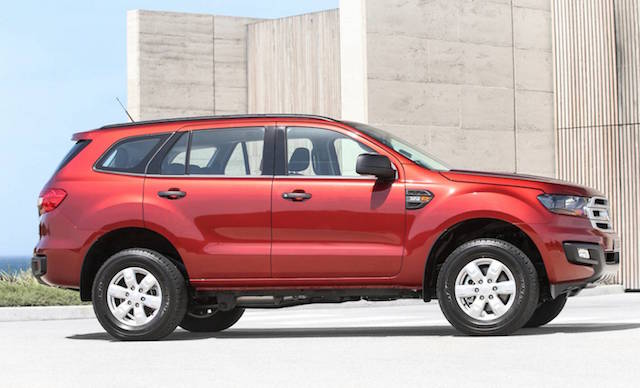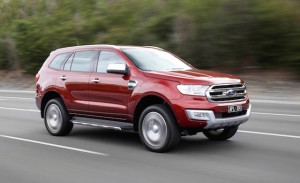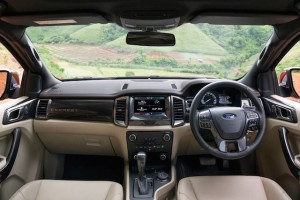
Ford NZ looks like it might climb into another Everest SUV, this one with its five-cylinder turbo-diesel engine driving the rear wheels only.
The company’s communications man Tom Clancy has confirmed that it is looking at a 2WD Everest to join the 4WD. Ford Australia will launch the 2WD in September.
“It’s got great potential, but as of yet we have not confirmed it for New Zealand,” Clancy said.
The 2WD Everest would stand alone in NZ among ute-based heavy-duty SUVs. Its rivals are all 4WDs – Toyota Fortuner, Mitsubishi Pajero Sport, Holden Colorado 7, and Isuzu MU-X. Everest of course is based on the 2WD Ranger ute.
 Ford Australia has confirmed that its 2WD Everest will be available with Trend specification only. Trend is in the middle of three models across the ditch, whereas in NZ it’s the first of two, the model above it being the $87,990 Titanium.
Ford Australia has confirmed that its 2WD Everest will be available with Trend specification only. Trend is in the middle of three models across the ditch, whereas in NZ it’s the first of two, the model above it being the $87,990 Titanium.
Ford NZ would almost certainly follow suit with Trend spec. The 4WD Trend starts in price in NZ at $75,990. A 2WD Trend would be cheaper, perhaps coming in at just under $70,000, making the Everest badge more accessible.
Another thing Ford NZ is no doubt considering is that Everest has seven seats, just like the Falcon-based Territory. But Territory will be no more after Ford shuts down production next year and its likely replacement, the Canadian-built Edge, has five seats.
 A seven-seat Everest with 2WD and 4WD options might open up a niche for Ford NZ. It worked with the 2WD Ranger, the success of which forced Toyota to include a few 2WDs in the Hilux range and Isuzu to do the same with its D-Max.
A seven-seat Everest with 2WD and 4WD options might open up a niche for Ford NZ. It worked with the 2WD Ranger, the success of which forced Toyota to include a few 2WDs in the Hilux range and Isuzu to do the same with its D-Max.
Apart from the loss of 4×4 capability, the 2WD Everest Trend gets the same features as its all-paw Everest team-mate, including the 143kW/470Nm 3.2-litre diesel engine.
Those features will soon be updated with Ford’s latest Sync3 connectivity, a new 20cm touchscreen that allows swipe and pinch movements like a smart phone, as well as improved graphics, move intuitive operation and compatible apps such as Spotify, Pandora and Google Maps+.
Another Everest 2017 model-year update is the addition of Isofix child seat anchorage points, alongside the existing five rear-of-seat anchorage points. Ford says the Isofix anchor points on the outer second row seat positions will make it easier to fit child seats.
